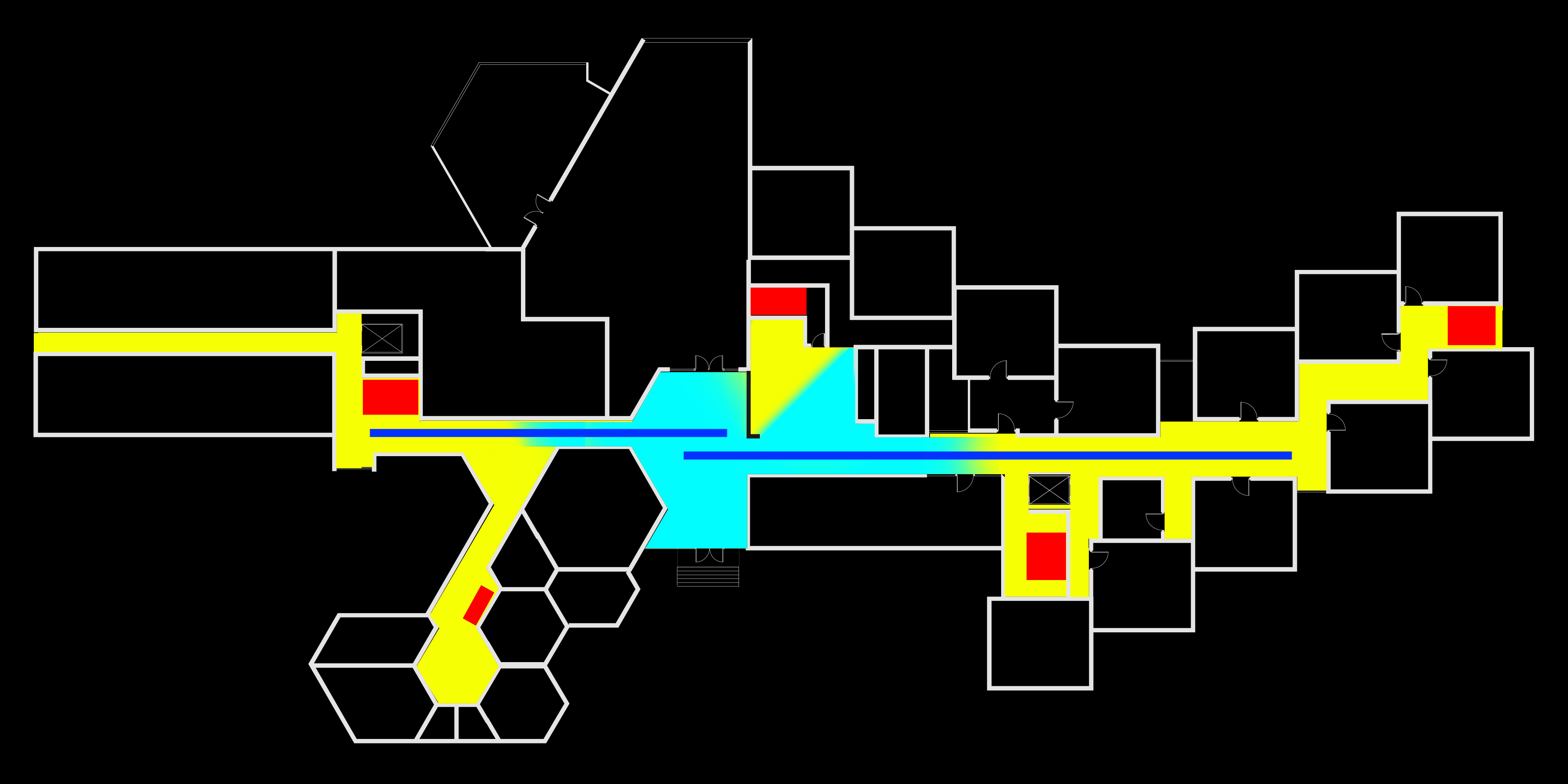

|
Finding the Way Inside: Linking Architectural Design Analysis and Cognitive Processes
contact: Georg Vrachliotis
  Many people have problems finding their way around public buildings such as airports, hospitals, office buildings, and not least of all university buildings. The problem may partially lie in their spatio-cognitive abilities, but could also be due to an architecture that only rudimentarily accounts for what is known about human spatial cognition. The aim of the case study is to make progress towards linking architectural design and human spatial cognition research.
The study is concerned with human wayfinding in public buildings. Two main aspects of wayfinding difficulties are considered: architectural features of the building and cognitive processes of the agent. We conducted an empirical study in a complex multi-level building, comparing performance measures of experts and novices in different wayfinding tasks. Thinking aloud protocols provide insights into navigation strategies, planning phases, use of landmarks and signage, and measures of survey knowledge. Specific strategies for navigation in multi-level buildings, like the floor strategy, are identified and evaluated. An architectural analysis of the building is provided and possible causes for navigation problems are discussed. Different architectural features of the building are investigated with respect to human spatial cognition and usability issues. Finally potential benefits for the architectural design process were addressed and discussed for further research.
Many people have problems finding their way around public buildings such as airports, hospitals, office buildings, and not least of all university buildings. The problem may partially lie in their spatio-cognitive abilities, but could also be due to an architecture that only rudimentarily accounts for what is known about human spatial cognition. The aim of the case study is to make progress towards linking architectural design and human spatial cognition research.
The study is concerned with human wayfinding in public buildings. Two main aspects of wayfinding difficulties are considered: architectural features of the building and cognitive processes of the agent. We conducted an empirical study in a complex multi-level building, comparing performance measures of experts and novices in different wayfinding tasks. Thinking aloud protocols provide insights into navigation strategies, planning phases, use of landmarks and signage, and measures of survey knowledge. Specific strategies for navigation in multi-level buildings, like the floor strategy, are identified and evaluated. An architectural analysis of the building is provided and possible causes for navigation problems are discussed. Different architectural features of the building are investigated with respect to human spatial cognition and usability issues. Finally potential benefits for the architectural design process were addressed and discussed for further research.
published in:
Freksa, C.; Knauff, M.; Krieg-Brückner, B.; Nebel, B.; Barkowsky, T. (Eds.). Spatial Cognition IV Reasoning, Action, Interaction. International Spatial Cognition 2004, Frauenchiemsee, Germany, October 11-13, 2004, Lecture Notes in Artificial Intelligence, Vol. 3343
-- GeorgVrachliotis - 10 May 2005
Revision r1.3 - 26 May 2005 - 10:27 - GeorgVrachliotis
Parents: WebHome
|
Copyright © 1999-2003 by the contributing authors.
All material on this collaboration platform is the property of the contributing authors.
|
| |
|




 Many people have problems finding their way around public buildings such as airports, hospitals, office buildings, and not least of all university buildings. The problem may partially lie in their spatio-cognitive abilities, but could also be due to an architecture that only rudimentarily accounts for what is known about human spatial cognition. The aim of the case study is to make progress towards linking architectural design and human spatial cognition research.
The study is concerned with human wayfinding in public buildings. Two main aspects of wayfinding difficulties are considered: architectural features of the building and cognitive processes of the agent. We conducted an empirical study in a complex multi-level building, comparing performance measures of experts and novices in different wayfinding tasks. Thinking aloud protocols provide insights into navigation strategies, planning phases, use of landmarks and signage, and measures of survey knowledge. Specific strategies for navigation in multi-level buildings, like the floor strategy, are identified and evaluated. An architectural analysis of the building is provided and possible causes for navigation problems are discussed. Different architectural features of the building are investigated with respect to human spatial cognition and usability issues. Finally potential benefits for the architectural design process were addressed and discussed for further research.
Many people have problems finding their way around public buildings such as airports, hospitals, office buildings, and not least of all university buildings. The problem may partially lie in their spatio-cognitive abilities, but could also be due to an architecture that only rudimentarily accounts for what is known about human spatial cognition. The aim of the case study is to make progress towards linking architectural design and human spatial cognition research.
The study is concerned with human wayfinding in public buildings. Two main aspects of wayfinding difficulties are considered: architectural features of the building and cognitive processes of the agent. We conducted an empirical study in a complex multi-level building, comparing performance measures of experts and novices in different wayfinding tasks. Thinking aloud protocols provide insights into navigation strategies, planning phases, use of landmarks and signage, and measures of survey knowledge. Specific strategies for navigation in multi-level buildings, like the floor strategy, are identified and evaluated. An architectural analysis of the building is provided and possible causes for navigation problems are discussed. Different architectural features of the building are investigated with respect to human spatial cognition and usability issues. Finally potential benefits for the architectural design process were addressed and discussed for further research.